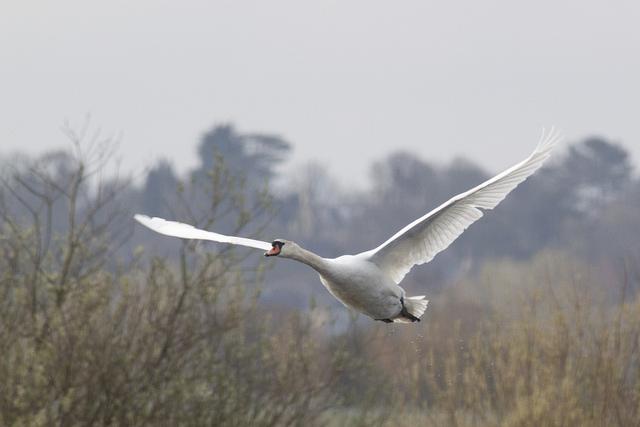In the latest avian flu outbreak developments, the United Kingdom reported its first detection of highly pathogenic H5N6, based on sampling from mute swans found dead, and South Korea reported another poultry farm outbreak involving the virus.
In the latest research findings, scientists who have been watching avian flu virus levels in Cambodia's live market poultry reported higher levels since their last report, along with coinfections in the birds that pose a risk of emerging reassortant viruses.
H5N6 in England, South Korea
The UK's outbreak began on Jan 9 when three mute swans were found dead at a nature park near the city of Dorset in southwest England, according to a report today from the World Organization for Animal Health (OIE).
The report said the finding marked the first detection of the strain in the UK, but it's not clear if the H5N6 virus isolated from the samples is the reassortant recently detected in South Korea and a handful of other countries.
The Netherlands reported a detection of the reassortant in the middle of December. Two days ago, Germany reported its first detection of H5N6, which was found in a dead wild duck; however, it's not clear if the virus is related to the reassortant that turned up in the Netherlands.
Elsewhere, South Korea yesterday reported another H5N6 outbreak, which affected a commercial farm housing broiler ducks in South Jeolla province, which has already reported several events involving the strain.
According to an OIE notification, the outbreak began on Jan 7, killing 10 of 16,500 susceptible birds. The surviving ducks were culled.
H5N8 in Saudi Arabia, South Africa
In outbreaks involving other strains, Saudi Arabia's agriculture ministry today reported four more highly pathogenic H5N8 outbreaks, all from Riyadh province, according to a government statement translated and posted by Avian Flu Diary (AFD), an infectious disease news blog.
The country reported its first H5N8 outbreak in late December in the Riyadh area, and, since then, the virus quickly spread to poultry in other parts of the country.
South Africa's health ministry yesterday reported 12 more H5N8 outbreaks that began on commercial ostrich farms between Aug 2 and Dec 4, according to a notification from the OIE. All of the farms were in Western Cape province.
Taken together, the virus sickened 190 of 17,317 birds, which were quarantined to halt the spread of the virus.
Avian flu levels rising in Cambodian poultry
In research developments, the levels of avian influenza viruses (AIVs) in poultry in Cambodian live-bird markets (LBMs) are rising, according to the latest findings from researchers from Australia and Cambodia who have been monitoring the viruses in two of the country's markets since 2011. They detailed the new developments yesterday in Emerging Infectious Diseases.
Earlier surveillance studies from Cambodia suggested the country has some of the world's highest AIV detection rates in poultry.
From February through December of 2015, each week they collected oropharyngeal and cloacal swabs from four chickens and four ducks picked randomly from two LBMs, one in Phnom Penh at the hub of poultry commerce and the other a smaller market in Takeo province. The researchers also collected samples from carcass wash water.
They found year-round high cocirculation of H5, H7, and H9 viruses. They found influenza A viruses in 51.3% of ducks and 39.6% of chickens, and 93% of carcass wash water samples, along with coinfections—mainly involving H5 and H9 viruses—in 0.8% of ducks and 4.5% of chickens.
For comparison, in the group's 2013 study they found AIVs in 32% of ducks, 18% of chickens, and 75% of carcass wash water.
The level of coinfections is a concern, due to the risk of reassortment that could produce novel avian flu viruses that might have pandemic potential, the team wrote. "Interventions should be considered to decrease the prevalence of AIVs in LBMs to reduce the risk for emergence of novel viruses," they wrote.
See also:
Jan 10 OIE report on H5N6 in the UK
Jan 9 OIE report on H5N6 in South Korea
Jan 10 AFD post
Jan 9 OIE report on H5N8 in South Africa
Jan 9 Emerg Infect Dis study





















